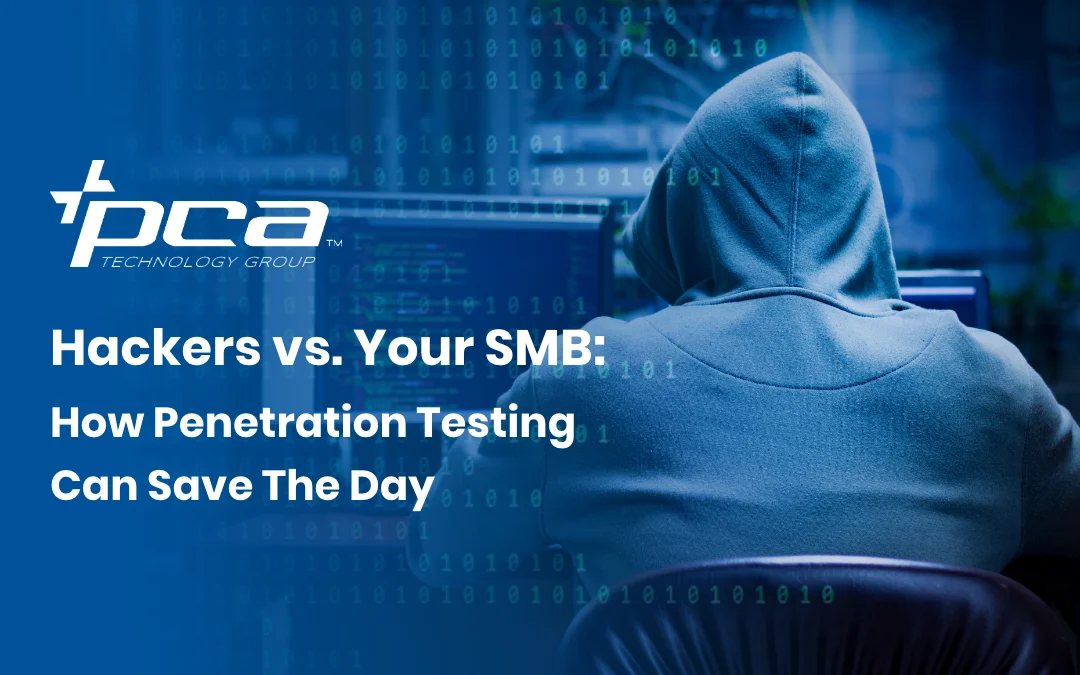Small to medium businesses (SMBs) have limited cybersecurity resources to protect valuable data. This makes them vulnerable to hackers, who are always searching for vulnerabilities they can exploit. Fortunately, penetration testing (pen testing) offers a powerful but cost-effective solution to protect against these malicious actors. Read on to learn how penetration testing works and how it can help you stay one step ahead of cybercriminals.
Understanding penetration testing and its benefits
Penetration testing involves simulating cyberattacks to identify security vulnerabilities within a system or network. Think of it as a law enforcement or national security agency conducting anti-terrorism exercises to test their response capabilities. Pen testing can offer a wide range of benefits for your SMB, including:
A proactive defense
Pen testing allows businesses to adopt a proactive security approach by uncovering vulnerabilities before hackers can take advantage of them. The insights gained from pen testing reveal your cybersecurity measures’ strengths and weaknesses, helping you effectively allocate resources and efforts to address critical vulnerabilities.
Cost savings
The cost of a pen test is often less than the expenses associated with a data breach, which, according to IBM’s Cost of a Data Breach Report 2024, currently sits at a global average of $4.88 million. Using regular pen tests, businesses like yours can avoid legal fees, penalties, and business loss that inevitably accompany a data breach.
Enhanced customer confidence
Building trust is essential for retaining customers. By prioritizing robust cybersecurity measures, businesses can actively protect customer data and foster confidence. When consumers see a commitment to data security, they’re more likely to remain loyal. This is especially true with how security and privacy-conscious consumers have become. In competitive markets, customers are more likely to choose businesses that prioritize data security.
Compliance assistance
Many industries require regular security assessments, including penetration testing. Standards such as PCI DSS specifically mandate annual pen tests for organizations that manage credit card information.
How penetration testing works
Penetration testing involves four main steps:
Scoping
Before defining the scope of a pen test, it’s crucial to establish the desired outcome. Organizations have diverse reasons for conducting penetration testing, ranging from compliance to security validation. The scope of the testing should align with these objectives.
Execution
To identify vulnerabilities, skilled penetration testers, often called ethical hackers, perform pen tests by combining automated tools and manual assessments. Leading penetration testing providers optimize automation, enabling human testers to focus on more complex and less obvious vulnerabilities.
Remediation
Remediation involves patching any vulnerabilities discovered during the pen test. Modern penetration testing providers deliver comprehensive reports with proof-of-concept evidence, screenshots, and actionable recommendations. These detailed reports assist IT teams and system administrators in efficiently addressing vulnerabilities.
Retesting
After remediation, the test provider performs a retest to confirm the patches’ effectiveness. This final step ensures that vulnerabilities have been successfully eliminated, giving you confidence that your systems are secure and compliant.
Different types of penetration testing
Although the core process remains the same, penetration testing can be conducted in three primary ways, each offering a unique perspective on your security posture:
Black box penetration test
A black box penetration test most closely simulates a real-world cyberattack. The testers receive minimal information about the target organization, imitating a scenario where an external attacker has limited knowledge. Using this approach, pen testers attack a business’s system from an outsider’s perspective, revealing vulnerabilities that hackers would most likely exploit.
Gray box penetration test
Also known as a translucent box test, a gray box penetration test provides the tester with limited information, typically in the form of login credentials. This approach is valuable for understanding the potential security risks associated with privileged user access, such as when malicious actors acquire the password of employees with broad data access permissions.
White box penetration test
White box penetration tests offer testers the most comprehensive information about the target organization. Testers are provided with internal documents, user credentials, and access to source code. This approach allows for a focused assessment of specific vulnerabilities and delivers a comprehensive evaluation of digital assets.
Penetration testing can be a powerful tool for your SMB, helping you identify and fix vulnerabilities before hackers can leverage them. However, to make the most of pen testing and ensure a comprehensive evaluation, you need to partner with the right provider who can implement the right pen test strategy for your organization.
PCA Technology Group specializes in keeping SMBs protected against hackers. We conduct expert penetration testing and implement comprehensive solutions to fortify your digital defenses. Contact us today.


